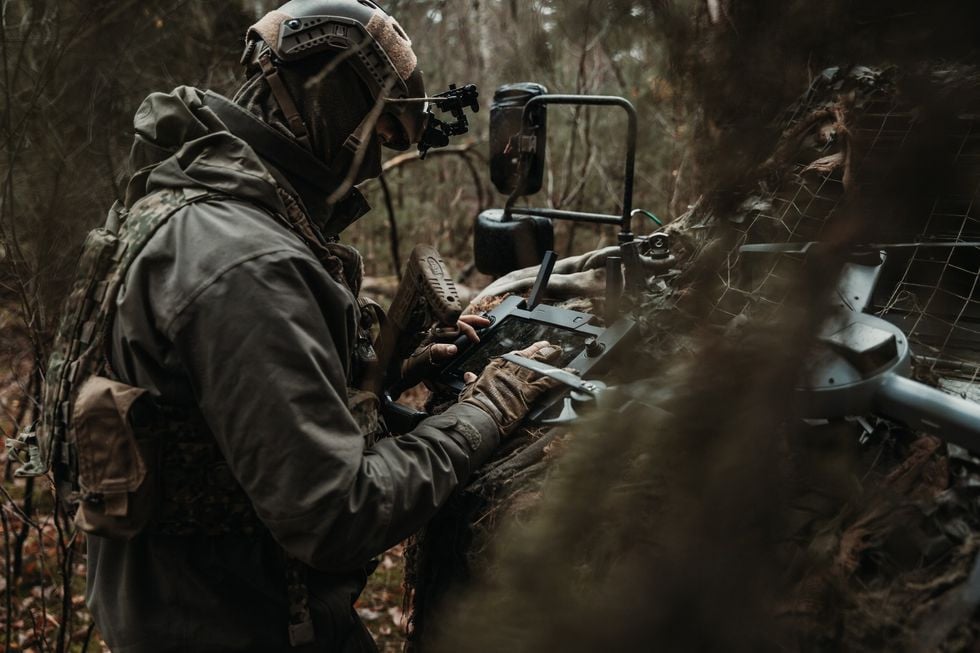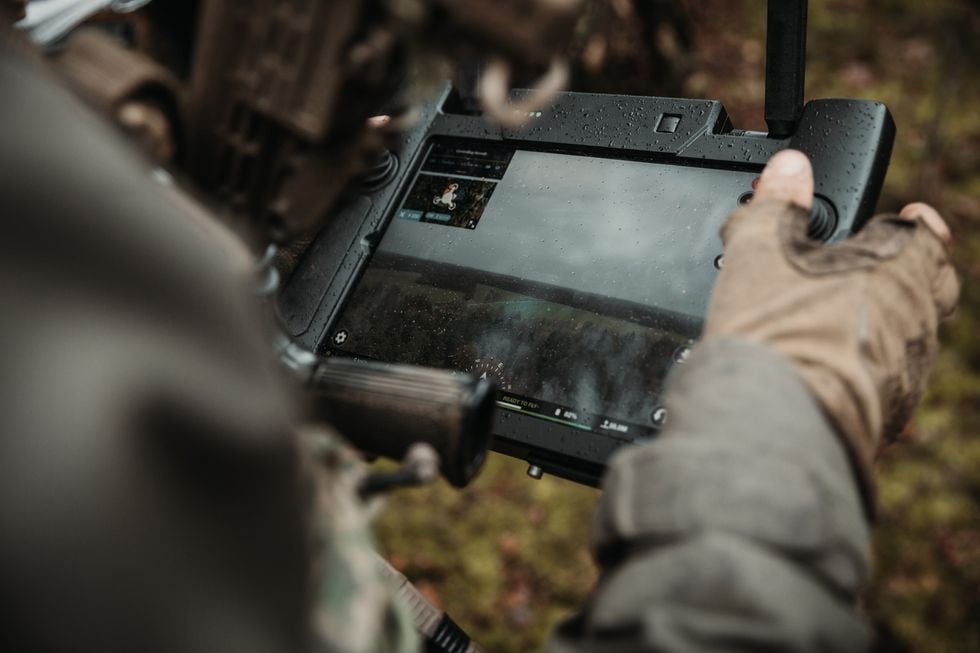Russia claims to have destroyed 90% of Ukraine's drones through jamming. That figure is unverified, but a report from RUSI – a UK-based strategic think tank – indicates that in the early months of the conflict, drones had an average lifespan of only three days before being neutralized.
Even some specialized military drones are easily shot down. The US sent RQ-11 Raven reconnaissance drones to Ukraine in 2016, but they were quickly shelved because they couldn't operate under the heavy electronic warfare of the Russian military.
Inherent weakness
In the early days of the war, drones, mostly Mavic models manufactured by China's DJI, helped Kyiv's tank-hunting teams stalk their targets in cities and towns. They also performed reconnaissance and surveillance missions, providing indirect positioning for artillery, tanks, and mortars.
However, even before the Russia-Ukraine conflict broke out, military researchers had noted that radio communication was the "Achilles' heel" of consumer drones. Meanwhile, Russia is a major electronic warfare power, possessing a range of powerful jamming systems capable of cutting off communication signals or emitting sounds with wavelengths that override drone control signals, as well as GPS signals.

"In some areas of Ukraine, DJI drones can't even take off due to jamming on all frequencies," said Ivan Tolchinsky, a former Israeli Defense Forces sniper and founder of Atlas Dynamics, a company supplying drones to the Ukrainian military.
To address this problem, drones are being equipped with new frequency-hopping systems capable of scanning radio waves, detecting which frequencies are being interfered with, and automatically switching to the new frequency. However, this is not a long-term solution in the fight.
Decentralized communication
Atlas Dynamics is developing the next generation of tri-rotor drones based on the mesh broadcasting principle – a setup where each transmitter acts as a communication node with neighboring nodes, forming a robust communication network.
For example, a drone in a deep valley might not be able to communicate directly with its operator, but it could still transmit signals to another drone high above to receive commands from the commander. In theory, this could happen with multiple "jumps".
Currently, the company is testing a setup that includes up to 5 drones/network with a single operator.

“The company’s idea is to increase network capacity to up to 50 drones simultaneously, but more importantly, to create a common ecosystem,” Tolchinsky said, referring to the different drones operating within the same network to specialize in specific tasks. For example, one drone flying high would maintain communication, while lower-flying drones equipped with different sensors could connect even with robots on the ground.
In this scenario, the operator becomes a "swarm" commander, managing a group of drones that perform most tasks themselves, and only needs to make the crucial decisions.
Integrated chips optimize hardware performance.
According to Atlas Dynamics, the drones will be equipped with programmable integrated circuits (FPGAs), which are essentially microchips that allow for the creation of specialized microprocessors, efficiently leveraging hardware power for a specific application without the need to build a multi-billion dollar factory.
This technology has been researched and developed by the startup for the past five years, even before the war broke out, and is expected to be officially released later this year.
Tolchinsky stated that the core issue for the next generation of drones is not just about equipping them with more advanced technology, but also about minimizing the cost per device so that users no longer have to worry about expensive aircraft being shot down.
“There are some very expensive drones in Ukraine, but they’re not working because they’re worried about the equipment malfunctioning or being shot down. They have to use something cheap enough,” said the former Israeli sniper.
Traditional military applications often face the trend of increasingly complex and expensive equipment. For example, the Predator 1 reconnaissance aircraft, initially a $1 million unmanned seaplane equipped with cameras, quickly evolved into the $22 million Reaper stealth fighter.
However, military drone manufacturers cannot continue to push prices higher when they face competition from civilian drone manufacturers offering lower costs. Furthermore, in the event of war, inexpensive and effective devices will have an advantage over sophisticated but expensive hardware.
(According to PopularMechanics)
Source


![[Image] Central Party Office summarizes work in 2025](/_next/image?url=https%3A%2F%2Fvphoto.vietnam.vn%2Fthumb%2F1200x675%2Fvietnam%2Fresource%2FIMAGE%2F2025%2F12%2F18%2F1766065572073_vptw-hoi-nghi-tong-ket-89-1204-jpg.webp&w=3840&q=75)





























































































Comment (0)